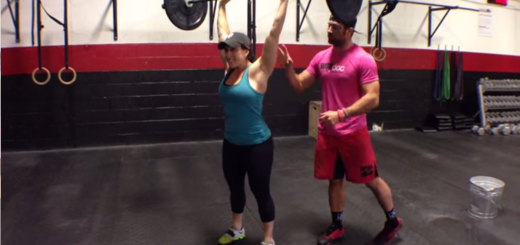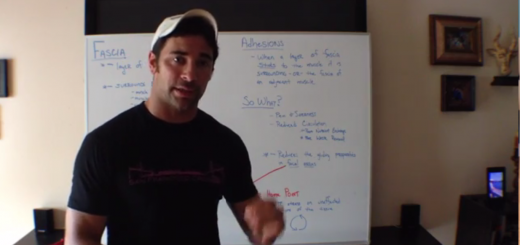Ice: The Overused Modality
Many years ago I got tired of watching my athletes roll in to the ice-for-injuries athletic training room and slap on ice. These athletes are in a drug-like induced state of ice addiction. Their athletic trainers keep feeding the disease, by recommending cold treatment and doing the easy – here’s ice, shut-up, leave. I felt I was doing a disservice to my athletes and asked myself, “Why are we icing this injury?” I never had an answer that was supported by evidence. So I began my own case study.
I took 9 Division I athletes (6 patellar tendinopathy, 2 bicipital tendinopathy and 1 subacromial impingement) and had the athletes cease all cryotherapy and electrical stimulation.
Warning: Telling an athlete not to ice brings about a firestorm from all angles. Coaches, parents, the athletic director, the family friend chiropractor, the great aunt who is a dentist, and even mom the real estate agent will question your motives. It is possible you will be hung, drawn, quartered, and undoubtedly face major scrutiny. Your athletes will whine, piss, and moan the day you stop allowing ice. Your athletes may befriend a student athletic trainer to do the dirty deeds. You must have the scientific facts to fight all naysayers.
I then put the athletes on a rehabilitation only protocol. My results, all 6 patellar tendinopathy issues resolved. 1 biceps tendon resolved, the other was later found to have a SLAP tear. The subacromial had no change. Why did this work? Because I followed the science, used common sense, and challenged traditional thought. The NATA and the BOC have emphasized the importance of Evidence Based Practice. As clinicians we will have better outcomes if we listen to the evidence.
During the NATA conference I was glad to see lectures supporting my thoughts and the evidence. I tweeted my thoughts and had an immediate response of “what?” “Really?” “Why?” There is lack of evidence to support utility of cold for healing. Inflammation is the initiation of healing, so why do we stop the healing process? Inflammation occurs within seconds after injury. Why allow inflammation to start then stop the process? Imagine cars on a busy freeway as cells moving to a location. Then, suddenly a roadblock is applied and only some of the cells make it to the site. How are you supposed to heal and repair if the body is not allowed to do its job? Let’s use the analogy of baking a cake. You go to the store, buy ingredients, come home mix all the ingredients, but I won’t let you bake the cake. Now you have a bunch of material that you created, that is now wasted and no longer useful. Doesn’t make sense does it?
It is true we want to limit excessive inflammation and we want to facilitate removal of inflammatory byproducts from the injury site. However, ice / cold does not do this. Ice prevents movement and removal. In the case to limit excessive inflammation and remove inflammatory byproducts, use compression, elevation, and massage, not ice.
We often sue the term “tendonitis”. However, the “itis” is not really true. Tendon is not really inflamed, rather it is deranged (Tendiopathic / tendinopathy). When tendon is deranged you should apply the theories of mechanobiology, cellular signaling, and mechanotransduction to repair tissue. If you want more info on mechanotransduction, I have written a blog dedicated just to that.
Evidence has shown that tissue loading through exercise or other mechanical means stimulates gene transcription, proteogenesis, and formation of type I collagen fibers (See studies by Karim Khan, Durieux, Mick Joseph, and Craig Denegar). Ice does nothing to facilitate collagen formation. Tenocytes are spread out and have octopus like tentacles that connect cells and fascia. When a load isintegrin applied to a tenocycte the force is transmitted to neighboring cells. The neighboring cells receive the signal through receptors called integrins. The integrins then carry the signal from the outside of the cell to the inside. This signal is then carried down actin filaments to the cell nucleus, where transformation occurs. See the image to right for a visual.
Our body has all types of cells (osteo, white, red, fibro, etc.). Stem cells are cells that have no idea what they will be in the future. Then there are proginetor cells. These cells have some idea what they will be, but can still be manipulated and changed to a specific cell type. So a progenitor cell can become an osteocycte, chondrocycte, tenocyte, etc. Load in tendon tells our body to turn a progenitor cell in to a tenocyte. Load in bone tells a progenitor cell to become an osteocyte. Why do bone stimulators work? Because we are loading bone by using sound waves to apply a mechanical force on bone. Similarly, tendon is thicker and more dense in athletes, because they load tendon more.
The acronym RICE is bogus in my opinion. Rest is not the answer. Rest does not stimulate tissue repair. In fact rest causes tendon to waste. You may say, “yeah but this is an overuse injury, you must rest.” True, overload does cause tendon thickening and tendon stiffness, but rest is not the answer. Appropriate load IS the answer as it stimulates metabolic processes of repair.
The other reason RICE is bogus is obvious, as the blog title indicates, ice. Evidence shows that cryotherapy slows metabolic processes and nerve conduction velocity. Metabolic pathways are necessary for human function. Cells are supposed to produce catabolic and anabolic reactions. This is a constant process in all humans. During healing we breakdown and rebuild tissue. Cold inhibits this function, so in a sense we are slowing the necessary catabolic and anabolic pathways.
I heard a great discussion at the NATA conference discussing ice and stim. Ice is designed to reduce pain by decreasing nociceptor fiber response and slow nerve conduction velocity. Stim (IFC / Premod / Biphasic waves) is designed to pump impulses at a high frequency to stimulate large diameter nerve fibers and override pain fibers. But if Ice slows nerve velocity, then why do we combine cold with high frequency stim? Is this not counterproductive? What happened to good ole rehab? Why use modalities and rest when you can rehabilitate. And don’t use the argument for a time crunch as I already wrote a blog on creating a beneficial rehabilitation program in 15 minutes.
It just makes no sense. The NATA and BOC are emphasizing clinicians use evidence base practice. If you are a clinician, use the evidence and steer away from traditional thought if it does not work.
Also, check out the benefits of heat:
Originally Article Posted by: Stone Athletic Medicine





